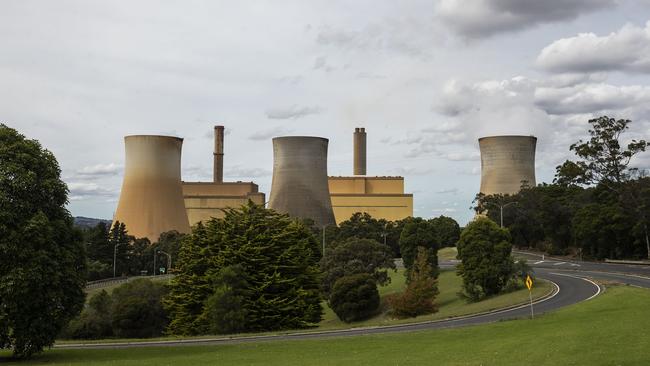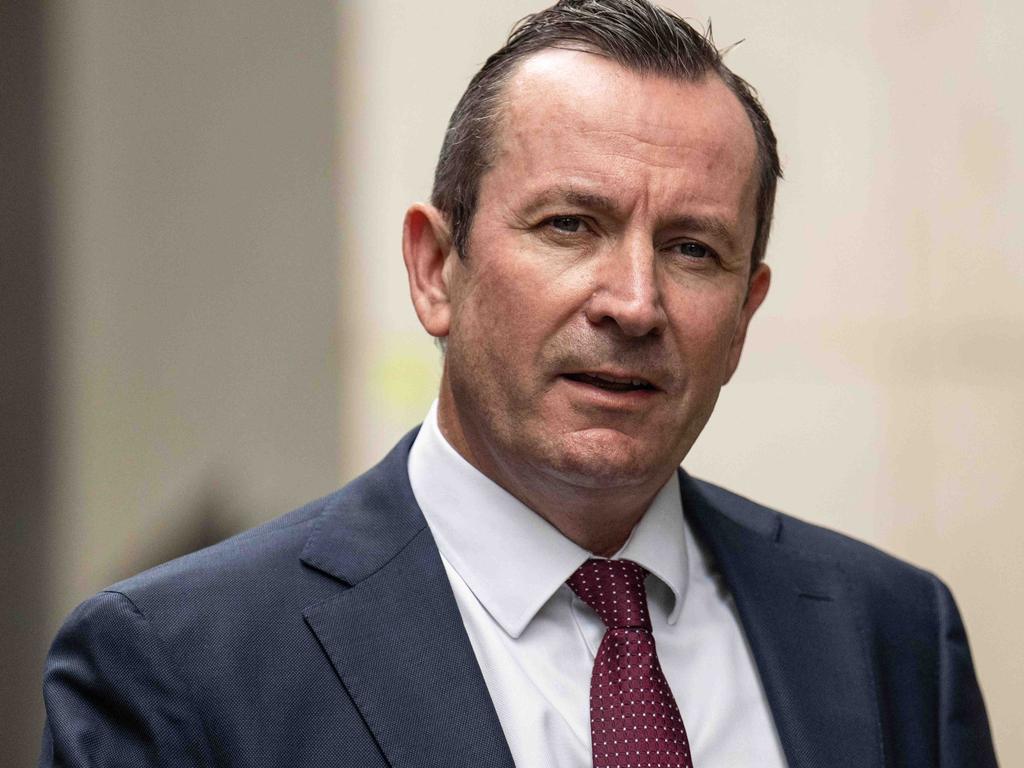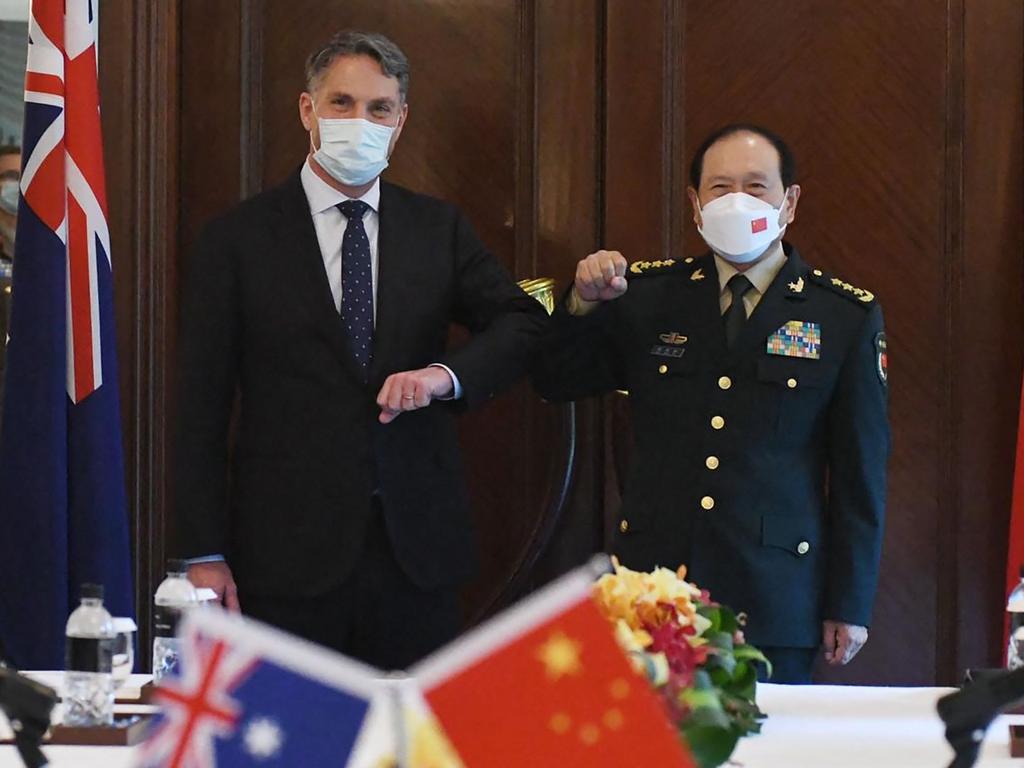Failures at Yallourn coal plant deepen electricity crisis
One of the country’s major coal plants has lost half its capacity, adding to the mounting woes in an electricity market teetering on the edge of widespread blackouts.

One of the country’s major coal plants has lost half its capacity, adding to the mounting woes in a national electricity market teetering on the edge of widespread blackouts.
EnergyAustralia’s confirmation that its Yallourn power station – which provides 20 per cent of Victoria’s electricity needs – had lost two of its four units came as market operators released repeated warnings of potential blackouts in Victoria, Tasmania and South Australia.
Officials believe there is almost 4000 megawatts of electricity supply sitting on the sidelines of the market, and the Australian Energy Regulator on Tuesday took the unprecedented step of writing to generators suggesting some may be withholding power to manipulate pricing.
“Recently the AER has observed that following the application of administered pricing in the NEM, generators are withdrawing available capacity from the market,” wrote the AER’s chair Clare Savage.
“This behaviour may be motivated by generators seeking to avoid the administered pricing compensation process in favour of the (Australian Energy Market Operator) directions compensation process.”
The AER has demanded generators meet their obligation to keep capacity in the market despite a $300MWh price cap. That was widened to include Victoria and South Australia on Tuesday in a bid to control spiking prices.
The warning to generators came as a AWU Victorian secretary Ben Davis, who represents tens of thousands of workers whose jobs depend on affordable gas supply, urged the Albanese government to limit gas exports immediately, or implement a tax on them.
Polyethylene manufacturer Qenos warned it and many other companies would not survive the surge in gas and electricity prices without urgent action.

And Australian Chamber of Commerce and Industry chief executive Andrew McKellar, while wary of market intervention, warned Australia was “stumbling into an energy crisis” with a real risk of serious repercussions for the economy.
Energy Minister Chris Bowen, warned there would not be a short-term solution to the crisis, which has been caused by a sharp reduction in the amount of coal generation available and a cold snap across the eastern states. He has requested households reduce non-essential electricity use.
“I expect most of those things would have been turned off already because power bills are so high,” Mr Bowen said.
“So swimming pool filters, swimming pool heaters and outside lighting … There is a general request that the market is tight and if they can be turned off then that would be useful.”
Powerlink urged Queensland households to cut energy consumption on Tuesday evening amid fears of a blackout. The state-owned transmission company called on residents to limit use of air conditioners, switch off electrical equipment at power points and turn off unnecessary lighting.
Anthony Albanese is holding a cabinet meeting in Gladstone on Wednesday and is likely to discuss potential solutions to the crisis. The Prime Minister said the former government’s “decade of neglect” had left Australia with an electricity grid that “isn’t fit-for-purpose in the 21st century”.
“You’ve had too many arguments taking place rather than the investment certainty which comes from having an energy policy,” Mr Albanese said.
The Yallourn generators are both scheduled to return to service this week, although the outage is believed to have added to risks of blackouts across the electricity market. The Australian revealed last week that AGL Energy’s Bayswater coal plant in NSW had also lost half its capacity. An unrelated breakdown at AGL’s Loy Yang A facility is also expected to take two months more than originally forecast to repair.
AEMO issued notices flagging a level-three “lack of reserve” notice in Victoria, Tasmania and South Australia on Tuesday afternoon and updated the widening gap between available capacity in the NSW.
At 2.15pm AEMO updated its forecast power shortfall notices for NSW, saying as much as 1748 megawatts of energy needs to come into the market to avoid load shedding on Tuesday night. That figure represents about 14 to 15 per cent of the state’s usual evening load.
The $300MWh cap has meant some generators have withdrawn capacity, leading to forecast supply shortfalls and the potential for electricity blackouts. Gas-fired generators need a price of more than $500MWh to turn a profit given soaring spot prices for the fuel, illustrating why some suppliers are withdrawing.
Queensland and NSW generators will continue to be instructed to keep running, despite the fact some might not be profitable at those levels and therefore not bid energy into the system. Those generators would be allowed to seek compensation, with the same move on Monday helping ease similar blackout fears.
“AEMO will take further actions to improve electricity reserves, including directing generators into the market, which helped meet electricity shortfalls in Queensland and NSW yesterday,” the market operator said in a statement. “AEMO will continue to monitor reserve conditions closely in Queensland and NSW, and more broadly across the national electricity market, providing further updates should conditions change.”
Queensland gas exporters are likely to face more pressure over their supply to the domestic market, with new figures released by EnergyQuest showing more gas flowed north along pipelines to Queensland than was sent south as the energy crisis emerged.
Mr Bowen did not rule out implementing a 90-day temporary export and price control to make more gas available but warned the government did not have a legislative basis to introduce short-term reforms to contain soaring energy prices.
Coalition frontbencher Dan Tehan said the government should move forward its first sitting date so it could legislate short-term mechanisms to help contain soaring energy prices.
With the next sitting date scheduled for July 26, Mr Tehan said the opposition should be able to hold the government to account earlier and confirmed he would support a decision to pull the so-called gas trigger.
“The parliament is the place where we are able to hold the government to account,” Mr Tehan told Sky News Australia.
“We’ve got an energy crisis and a skills crisis and we’re not sitting until the end of July, why?
I’m incredibly surprised. This was a government that said accountability and transparency will be at the forefront of everything they do. It’s right to say the government should think about pulling this trigger. If we can’t get the gas at the right price to our manufacturing industries in particular, we’re going to see dire consequences as a result.”
ADDITIONAL REPORTING: GREG BROWN






